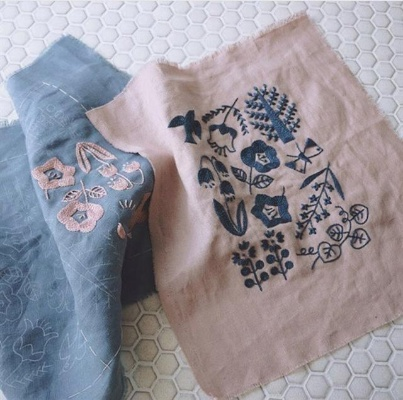The Role of Medical Textiles and Fiber Technologies in Healthcare
Medical textiles and fiber technologies play a crucial role in healthcare. They are used in various applications such as wound dressings, bandages, and surgical masks. Medical textiles are designed to provide comfort, support, and protection for patients during medical procedures and recovery. Fiber technologies are used to create advanced materials that can be used in healthcare settings. For example, nanofibers have been developed to improve the efficiency of drug delivery systems. These materials are also used in the production of medical devices such as stents and pacemakers. Overall, the use of medical textiles and fiber technologies has revolutionized healthcare by providing innovative solutions to complex medical problems.
Introduction: Medical textiles and fiber technologies play a critical role in the healthcare industry, providing essential support for patients and medical professionals alike. From surgical gowns to wound dressings, from hospital beds to personal protective equipment (PPE), these materials are integral to ensuring patient safety and comfort during medical procedures and treatments. In this article, we will explore the various types of medical textiles and their applications, as well as the latest advancements in fiber technology that are driving innovation in the healthcare sector.

Types of Medical Textiles:
- Surgical Gowns: These are specially designed gowns made from high-quality fabrics that protect both the wearer and the patient from contamination. They are typically made from polyester or cotton blends and feature antimicrobial properties to prevent cross-infection.
- Disposable Protective Equipment: This includes gloves, masks, and other personal protective items used by healthcare workers. These materials must be highly resistant to bacteria and viruses to minimize the risk of transmission.
- Hospital Bed Linens: These include sheets, blankets, and pillowcases that are designed to provide warmth and comfort to patients in hospitals. They are often made from synthetic materials like polyester or cotton blends to ensure easy cleaning and sterilization.
- Wound Dressings: These are thin layers of material that are applied to wounds to promote healing and prevent infection. They can be made from natural fibers like cotton or synthetic materials like polyester or rayon.
- Personal Protective Equipment (PPE): This includes everything from face shields to respirators used by healthcare workers. These materials must be durable, comfortable, and easy to use while also meeting regulatory standards for safety and efficacy.
Advances in Fiber Technology: In recent years, there has been significant progress in the field of fiber technology, which is driving innovation in the healthcare sector. One major area of development is the use of nanotechnology to create new materials with superior performance properties. For example, researchers are exploring the use of carbon nanotubes in medical textiles to improve strength, durability, and moisture management. Another area of focus is the development of biocompatible materials that are not only safe but also have the potential to heal wounds faster. Researchers are working on creating materials that mimic natural tissue architecture and function, such as using silk fibroin for skin grafts or chitosan for wound dressings. Furthermore, there has been a growing interest in developing sustainable and eco-friendly materials for medical textiles. This is driven by concerns about the environmental impact of traditional manufacturing processes and the need to reduce waste and promote sustainability in the healthcare industry. Some promising examples of eco-friendly materials include organic cotton, bamboo, and recycled polyester.
Case Study: One example of the application of medical textiles and fiber technology in healthcare is the development of innovative surgical gowns. A leading company in this space, BioGard, has developed a line of surgical gowns that incorporate advanced fabric technology to enhance patient safety and comfort. These gowns are made from a blend of polyester and elastane, which provides excellent flexibility and breathability while also being resistant to bacterial growth. The company's surgical gowns are also designed with antimicrobial properties, which help prevent cross-infection during surgeries. Additionally, they feature moisture management technology that helps keep patients dry and comfortable throughout the procedure. Another example is the use of nanotechnology in the development of wound dressings. A company called NanoCoat has developed a line of nanofiber wound dressings that are designed to accelerate wound healing by promoting blood circulation, reducing inflammation, and inhibiting bacterial growth. These dressings are made from a blend of polyethylene glycol and polyurethane nanofibers, which provide exceptional strength and flexibility while also being soft and gentle on the skin. They are hypoallergenic and free from harmful chemicals, making them an ideal choice for patients with sensitive skin or allergies.
Conclusion: In conclusion, medical textiles and fiber technologies play a crucial role in the healthcare industry, providing essential support for patients and medical professionals alike. From surgical gowns to wound dressings, from hospital bed linens to PPE, these materials are integral to ensuring patient safety and comfort during medical procedures and treatments. As we continue to advance in fiber technology, we can expect even more innovative solutions to emerge that will further enhance the quality of healthcare services worldwide.

随着医疗技术的不断进步,医用纺织品作为医疗领域的重要组成部分,其纤维技术的研发和应用显得尤为重要,本文将围绕医用纺织品及其纤维技术展开讨论,并通过英文案例说明来进一步阐述相关内容。
医用纺织品概述
医用纺织品是指用于医疗领域中的纺织品,包括但不限于医用床单、毛巾、口罩、手套等,它们在医疗过程中起到关键作用,如保护患者皮肤、减少医护人员接触感染风险等,医用纺织品的纤维技术主要包括纤维材料的选材、生产工艺、性能特点等方面。
纤维材料的选择
- 天然纤维:天然纤维如棉、麻、丝等具有天然的吸湿性、透气性、柔软性等特点,适合用于制作医用纺织品。
- 合成纤维:合成纤维具有优良的耐热性、抗皱性、抗过敏性等特点,同时具有较好的生物相容性和可降解性,符合现代医疗环保理念。
纤维生产工艺

- 纺丝技术:纺丝技术是医用纺织品生产的关键技术之一,包括熔喷纺、湿法纺等,熔喷纺技术能够生产出具有高强度、高透气性的医用纺织品。
- 后处理技术:后处理技术包括织造、染整、印花等工艺,能够进一步提高医用纺织品的性能和品质。
案例分析
以某医用纺织品公司为例,介绍其纤维技术的研发和应用情况,该公司采用先进的纺丝技术和后处理技术,生产出了一系列具有优良性能的医用纺织品,该公司生产的口罩材料采用了高强度、高透气性的合成纤维,能够有效减少医护人员接触感染的风险,该公司还注重环保理念,采用可降解的合成纤维材料,符合现代医疗环保要求。
纤维技术的应用
- 皮肤保护:医用纺织品在皮肤保护方面具有重要作用,能够减少皮肤摩擦和刺激,保护皮肤健康。
- 防护用品:医用纺织品可用于制作口罩、手套等防护用品,有效防止医护人员和患者之间的交叉感染。
- 医疗设备维护:医用纺织品可用于医疗设备的维护和保养,提高设备的可靠性和使用寿命。
医用纺织品及其纤维技术是医疗领域的重要组成部分,其研发和应用对于提高医疗质量和安全性具有重要意义,在未来的发展中,随着科技的不断进步和医疗需求的不断增长,医用纺织品的纤维技术将更加注重环保、高效、舒适等方面的要求,随着新型材料的不断涌现,医用纺织品的纤维技术也将不断创新和发展。
Articles related to the knowledge points of this article:
Guangzhou Xinxi Textile Factory A Global Player in Textile Industry
The Art of Textile Treasures:The Story of 珍之韵纺织品


